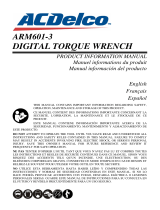
6
3. When the battery cartridge is inserted, the
charging light color will change from green to red
and charging will begin. The charging light will
keep lighting up lit steadily during charging. One
red charging light indicates charged condition in 0
- 80% and two red ones indicates 80 - 100%.
4. With finish of charge, the charging lights will
change from two red ones to two green ones.
5. If you leave the battery cartridge in the charger
after the charging cycle is complete, the charger
will switch into its "trickle charge (maintenance
charge)" mode which will last approximately 24
hours.
6. After charging, unplug the charger from the power
source.
NOTE:
• The battery charger is for charging Makita battery
cartridge. Never use it for other purposes or for
other manufacturer's batteries.
• When you charge a new battery cartridge or a
battery cartridge which has not been used for a
long period of time, it may not accept a full charge.
This is a normal condition and does not indicate a
problem. You can recharge the battery cartridge
fully after discharging it completely and recharging
a couple of times.
• If you charge a battery cartridge from a just
operated tool or battery cartridge which has been
left in a location exposed to direct sunlight for a long
time, the charging light may flash in red color. If this
occurs, wait for a while. Charging will begin after
the battery cartridge is cooled by the cooling fan
installed in the charger. (DC24SA only) When the
temperature on battery is more than approx. 70°C,
two charging lights may flash in red color, and when
approx. 50°C - 70°C, one charging light in red color.
• If the charging light flashes alternately in green and
red color, charging is not possible. The terminals on
the charger or battery cartridge are clogged with
dust or the battery cartridge is worn out or
damaged.
Cooling system (DC24SA only)
• This charger is equipped with cooling fan for heated
battery in order to enable the battery to prove its
own performance. Sound of cooling air comes out
during cooling, which means no trouble on the
charger.
• Yellow light will flash for warning in the following
cases.
- Trouble on cooling fan
- Incomplete cool down of battery, such as, being
clogged with dust
The battery can be charged in spite of the yellow
warning light. But the charging time will be longer
than usual in this case. Check the sound of cooling
fan, vent on the charger and battery, which can be
sometime clogged with dust.
• The cooling system is in order although no sound of
cooling fan comes out, if the yellow warning light
will not flash.
• Always keep clean the vent on charger and battery
for cooling.
• The products should be sent to repair or
maintenance, if the yellow warning light will
frequently flash.
Conditioning charge (DC24SA only)
Conditioning charge can extend the life of battery by
automatically searching the optimum charging condition
for the batteries in every situations.
The battery employed in the following conditions
repeatedly, will be worn out shortly, and yellow warning
light may flash.
1. Recharge of battery with its high temperature
2. Recharge of battery with its low temperature
3. Recharge of full charged battery
4. Over-discharge of battery (continue to discharge
battery in spite of down of power.)
The charging time of such battery is longer than usual.
Trickle charge (Maintenance charge)
If you leave the battery cartridge in the charger to prevent
spontaneous discharging after full charge, the charger
will switch into its "trickle charge (maintenance charge)"
mode and keep the battery cartridge fresh and fully
charged.
Tips for maintaining maximum battery life
1. Charge the battery cartridge before completely
discharged.
Always stop tool operation and charge the battery
cartridge when you notice less tool power.
2. Never recharge a fully charged battery cartridge.
Overcharging shortens the battery service life.
3. Charge the battery cartridge with room
temperature at 10°C - 40°C (50°F - 104°F).
Let a hot battery cartridge cool down before
charging it.
4. Charge the Nickel Metal Hydride battery cartridge
when you do not use it for more than six months.
Refresh charging
Refreshing adapter (optional accessory) can refresh an
inactive battery cartridge.
• Refresh charging should be done once a week.
• When you charge a new battery cartridge or a
battery cartridge that has not been used for a long
time, it may not accept a full charge. In this case,
refresh charging must be done. The battery
cartridge my decrease the tool performance,
because the chemical substance of the battery
cartridge is inactive.












